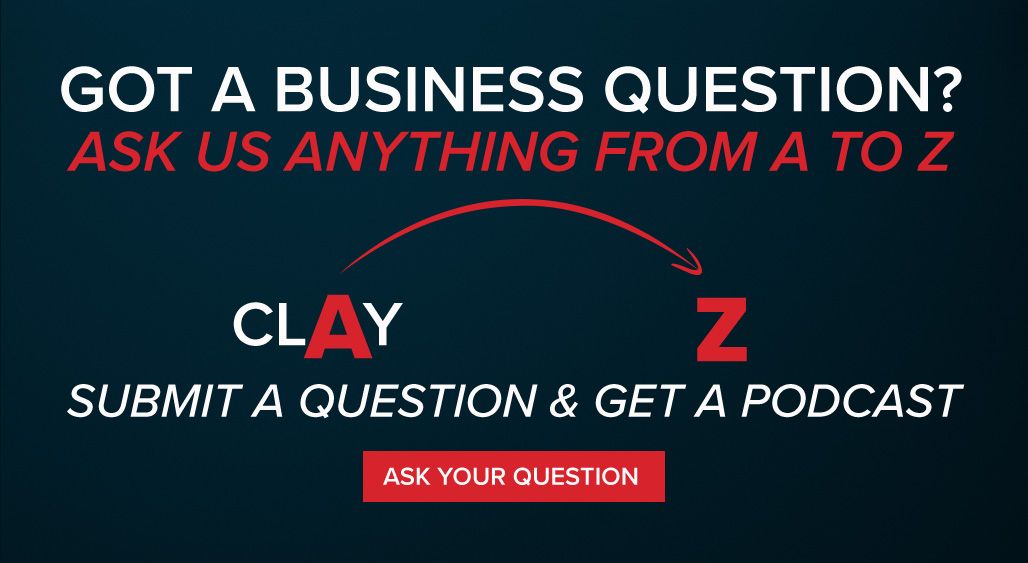EXPOSING NEIL FERGUSON and 4 Truths About A Players Versus B Players (with Cory Minter the founder of Trinity Employment Specialists)
Show Notes
It’s time to free your business from the “PLAGUE OF JACKASSERY” caused by C player employees.
https://www.youtube.com/watch?v=GFNvcw12d08&t=209s
Gain of Function
https://osp.od.nih.gov/biotechnology/gain-of-function-research/
NOTABLE QUOTABLE – “Public hangings are teaching moments. Every company has to do it. A teaching moment is worth a thousand CEO speeches.” – Jack Welch
This Notice provides guidance about the NIH Fiscal Operations for FY 2015 and implements the Consolidated and Further Continuing Appropriations Act, 2015 (H.R. 83/Public Law 113-235), signed by President Obama on December 16, 2014. The Act provides NIH with $30.31 billion in new budget authority or equivalent (program level), an increase of approximately $240 million over the FY 2014 final budget allocations totaling $30.07 billion.
NOTABLE QUOTABLE – “A small team of A+ players can run circles around a giant team of B and C players”. – Steve Jobs (The co-founder of Apple, the man behind NeXT, and Tesla)
NOTABLE QUOTABLE – “Talent sets the floor, character sets the ceiling,” Belichick said. “Success is not all about talent. It’s about dependability, consistency, being coachable, and understanding what you need to do to improve.” – Coach Bill Belichick
We are now bouncing back from this ridiculous covid disruption. And as much as we could talk about how unnecessary the whole thing is/was, it has now brought companies the biggest opportunity that I can ever remember to successfully recruit top performers onto your team.
Every major crisis does two things.
- A crisis creates unexpected problems.
- A crisis creates unprecedented opportunities
- Neil Ferguson, the Director of the Abdul Latif Jameel Institute for Disease and Emergency Analytics (J-IDEA) at Imperial College (London) Predicts 2.2 million Americans Will Die From the Coronavirus and That 500,000 Brits Will Die.
-
- Where is the report? https://www.imperial.ac.uk/media/imperial-college/medicine/sph/ide/gida-fellowships/Imperial-College-COVID19-NPI-modelling-16-03-2020.pdf
- Who Recommended Shutting Down Our Economies (Meet Neil Ferguson)? – Watch the video – 0:00 – 2:24 – https://www.youtube.com/watch?v=GFNvcw12d08
- Who funded the Abdul Latif Jameel Institute? https://www.mckinsey.com/business-functions/sustainability/our-insights/how-alj-a-75-year-old-start-up-leads-with-purpose
- “Both Ford and Amazon announced in 2019 that they were investing hundreds of millions of dollars in the ALJ-backed electric-vehicle manufacturer Rivian, with Amazon planning an initial purchase of 100,000 of its vehicles.”
The best companies will take advantage of the unprecedented recruiting opportunities available. But you have to be proactive and aggressive. Great leaders do this during hard times. The best business leaders will take advantage of this great opportunity
- NOTABLE QUOTABLE – “Good leaders lead through hard times.” – Craig Groeschel (The New York Times best-selling author and founding pastor of Life Church)
- NOTABLE QUOTABLE – “Some people don’t like change, but you need to embrace change if the alternative is disaster.” – Elon Musk (The man behind Paypal, Tesla, SpaceX, SolarCity, etc.)
- NOTABLE QUOTABLE – “A crisis has the rare side effect of bringing intense clarity to an organization. A crisis may mean you need to narrow your focus, redeploy team members to other areas, close a department, reallocate dollars, adjust expenses, approve certain projects, close others down, and eliminate fluff. These practical nuts-and-bolts opportunities help your company get laser-focused on what truly matters during a crisis.” – Craig Groschel (The New York Times best-selling author and founding pastor of Life Church)
- “Most people see problems. Leaders address the problems and seize the opportunities!” – Craig Groeschel (The New York Times best-selling author and founding pastor of Life Church)
A crisis can also create financial opportunities. You may see a need that your non-profit or company is uniquely equipped to fill. You may get an idea for a new business that will help solve the crisis. As a leader, look for financial opportunities and business needs and respond quickly. This doesn’t mean you’re taking advantage of crisis; it just means you’re making financial decisions that put you in the best position to survive or solve the crisis.
Story: Cory creating a technology that will save our company approximately $5,000.00/mo
Many employers have been forced to furlough and even lay off really great employees because of the significant loss in revenue and that has many great great employees open to new opportunities like never before. We need to take advantage of this.
This is a significant recruiting time.
FACT: “US weekly jobless claims hit 3.84 million, topping 30 million over the last 6 weeks.” – https://www.cnbc.com/2020/04/30/us-weekly-jobless-claims.html
There is no better time to upgrade your staff and some companies can do it with PPP money!
It is also a really great time to evaluate each employee on your team and consider taking advantage of the situation by restructuring your team, or replace some of your underperforming staff with new talent.
Hiring A players makes a significant difference in your team’s performance
https://dynamicsignal.com/2017/04/21/employee-productivity-statistics-every-stat-need-know/
-
- High performing employees have three things in common: talent, high engagement, and 10+ years of service within the company (Source: Gallup)
- Organizations with highly engaged employees had an average 3-year revenue growth 2.3 times greater than companies whose employees were only engaged at an average level. (Source: UNC Kenanflager Business School)
- Companies that increase their number of talented managers and double the rate of engaged employees achieve, on average, 147% higher earnings per share than their competition (Source: Gallup)
- Disengaged workers had 37% higher absenteeism, 49% more accidents, and 60% more errors and defects (Source: Queens School of Business and by Gallup)
- Organizations with low employee engagement scores saw 18% lower productivity, 16% lower profitability, 37% lower job growth, and 65% lower share price over time. (Source: Queens School of Business and by the Gallup)
- Actively disengaged employees cost the U.S. $450 to $550 billion per year in lost productivity (Source: Gallup)
Quotes: Ferris Bueller – Ferris Bueller once wisely counseled, life moves pretty fast.
So does the opportunity to capture the incredible opportunity to recruit A players to replace your B and C players.
Forbes article
- Highly engaged teams show 21% greater profitability
This finding by Gallup punctuates the fact that employee engagement consists of concrete behavior, not an abstract feeling. Organizations that view engagement as a feeling conduct employee surveys and offer perks to improve the results. The report finds that the most successful organizations make employee engagement central to their business strategy. They give employees clear expectations and provide them with the tools and support to do their best work. Why are engaged teams more profitable? Those teams who score in the top 20% in engagement realize a 41% reduction in absenteeism, and 59% less turnover. Engaged employees show up every day with passion, purpose, presence, and energy.
- Disengaged employees cost U.S. companies up to $550 billion a year
An exhaustive report by The Engagement Institute—a joint study by The Conference Board, Sirota-Mercer, Deloitte, ROI, The Culture Works and Consulting LLP—underscores how important engagement is to the bottom line. Interestingly, the majority of respondents recognize why they are not fully engaged. They list compelling missions, highly trusted relationships, and well-designed jobs as things they are looking for leadership to provide. This is another reason why communication is crucial to a healthy organizational culture. Employees will tell you what they need to be engaged if you listen to them.
https://www.zippia.com/employer/steve-jobs-top-hiring-tip-hire-the-best/
Quotes:
About Steve Jobs In his quest for the best, Steve Jobs has left us bits of wisdom about how to hire and retain the best talent. In his book, Leading Apple with Steve Jobs, author and former Apple senior vice president Jay Elliot details his former boss’ strategies for hiring what Jobs called “A-list players.”
I noticed that the dynamic range between what an average person could accomplish and what the best person could accomplish was 50 or 100 to 1.Given that, you’re well advised to go after the cream of the cream … A small team of A+ players can run circles around a giant team of B and C players.
Another Quote about Steve Jobs:
Walter Isaacson (Author of “Steve Jobs”) Walter Isaacson https://www.amazon.com/Steve-Jobs-Walter-Isaacson/dp/1451648537 quotes Jobs as saying, “I’ve learned over the years that, when you have really good people, you don’t have to baby them. By expecting them to do great things, you can get them to do great things. The original Mac team taught me that A-plus players like to work together, and they don’t like it if you tolerate B-grade work.”
Facts about Steve Jobs:
- He and his top executives never compromised with the talents and qualifications required of their employees. Steve Jobs believed that hiring was the most important thing he did. He managed all of the hiring for his team; never delegating it. He personally interviewed over 5,000 applicants during his career.
Cory Minter
Hiring “A” players produces 3 important results:
- A players do on average 1 and ½ times the work of B and C players.
- A players stay longer within your organization given you have other A players for them to collaborate with
- A players hang out with other A players and will eventually recruit them over to your team
The best advice that I have found to be effective in identifying “A”players is paying close attention to a candidate’s key habits. They will demonstrate these 4 habits in their answers to your questions during an interview, but you will see results of these habits show up when you are checking their references.
https://www.inc.com/rob-locascio/the-4-key-habits-of-an-a-player.html
4 Truths About A vs. B players
- A-players own both good and bad outcomes. B-players have a laundry list of excuses for why they’re not performing.
An employee who owns up to his or her mistakes demonstrates self-awareness and personal responsibility — both fundamental qualities of an A-player. Holding yourself accountable leads to solutions rather than prolonging the problem or repeating it over and over again. It also makes you relatable: Whether it’s a senior manager or an entry-level employee admitting to a misstep, leaders should appreciate honesty, because we’ve all been there.
2. A-players try something new or different to correct their course. B-players stick to their comfort zone.
Mistakes happen. Sometimes, they even lead to great things! But when the outcome is less than optimal, A-players learn to adjust their strategy, even when the answer is not in their wheelhouse. Your best employees are willing to try something new when the first plan isn’t working. B-players are unwilling or afraid to make necessary changes to create a better outcome.
3. A-players excite and motivate the people around them. B-players require motivation.
A-players start with high expectations and standards for themselves. They also impose them on their peers. Your best employees are eager to guide others along the path to collective success. In turn, people look forward to collaborating with A-players, which boosts morale and raises everyone’s bottom line. Conversely, B-players often deliver the task at hand but will require extra motivation to go above and beyond. A-players can make it seem like you’re not even working, whereas B-players can make everything seem like work.
4. A-players work to understand the ins and outs of their business. B-players know just enough to do the job.
“The A-player recognizes their fluctuating responsibilities, adapting to best solve problems,” states Vick Vaishnavi in Forbes. “You’ll never hear from them, ‘That wasn’t in my job description.’” A-players are actively involved members of your team, always working to better themselves and meet your end goals. They challenge your business and make it better. They also have the ability to view it from all standpoints and examine it from every angle. A designer can call out a flaw in strategy; a developer can weigh in on art direction, because they feel invested in the company. Your A-players want to understand all facets so they can help drive better outcomes. B-players are content with silos, and with the status quo.
There are entire teams and even companies dedicated to finding A-players. Learning how to grow and retain them is both art and science. These are areas I’ll continue to explore in this column. But in the meantime, I challenge you, no matter what stage your company is at, to take a step back and see who on your payroll is driving the business forward. This is a critical and sometimes difficult step you need to take to achieve long-term success.
Best Questions to ask employees to look for examples of these 4 traits:
Best book I have found on the subject of hiring A players
TOPGRADING
Topgrading, 3rd Edition: The Proven Hiring and Promoting Method That Turbocharges Company Performance Audible Audiobook – Unabridged
Bradford D. Smart Ph.D. (Author), Erik Synnestvedt (Narrator), & 1 more







